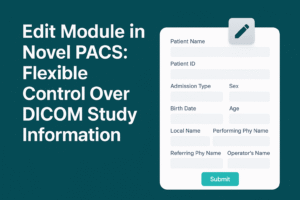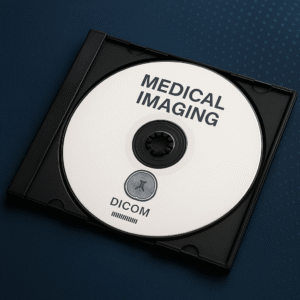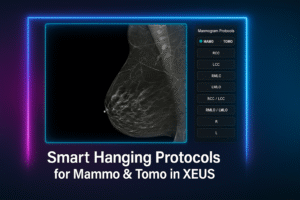In the field of medical imaging, efficient and standardized file formats are crucial for the storage, transmission, and analysis of medical images. One such format that has revolutionized the healthcare industry is DICOM (Digital Imaging and Communications in Medicine). In this article, we will explore the significance of DICOM and briefly touch upon other medical image file formats for different modalities. DICOM stands for Digital Imaging and Communications in Medicine: it is a non-proprietary international standard for the exchange, storage, and communication of digital medical images and other related digital data.
DICOM
DICOM is an international standard developed by the American College of Radiology (ACR) and the National Electrical Manufacturers Association (NEMA). It provides a universal format for the exchange and management of medical images and related patient information across different healthcare systems. DICOM ensures interoperability, enabling medical images to be seamlessly shared between various imaging devices, picture archiving, and communication systems (PACS), and healthcare institutions.
DICOM Features
DICOM offers a range of features that make it highly valuable in the medical imaging domain. It supports not only images but also non-image data such as reports, waveforms, and annotations. Additionally, DICOM incorporates comprehensive metadata, including patient demographics, acquisition parameters, and clinical information, ensuring the context and relevance of the images are preserved.
Other Medical Image File Formats
In addition to DICOM, there are various file formats specific to different medical imaging modalities. Some notable formats include:
-
NIfTI (Neuroimaging Informatics Technology Initiative): NIfTI is a format commonly used in neuroimaging studies, particularly for functional and structural magnetic resonance imaging (MRI) data. It allows for efficient storage and analysis of large datasets and has become popular in neuroscience research.
-
MINC (Medical Imaging NetCDF): MINC is a flexible format used primarily for brain imaging research. It supports multidimensional data and incorporates metadata such as patient demographics, scanner details, and acquisition parameters. MINC allows for complex image manipulation and analysis.
-
DICOM-RT (DICOM Radiotherapy): DICOM-RT is an extension of DICOM specifically designed for radiotherapy treatment planning and delivery. It includes additional information related to radiation therapy, such as dose distributions, treatment plans, and structure contours.
-
ACR-NEMA (American College of Radiology-National Electrical Manufacturers Association): ACR-NEMA was the predecessor to DICOM and is an older file format used for medical imaging. Although it is less prevalent today, some legacy systems and archives may still utilize ACR-NEMA files.
DICOM remains the dominant and widely adopted standard for medical image exchange and management. Its extensive features and interoperability have transformed the healthcare industry, enabling seamless integration of medical imaging devices and systems. However, specific modalities and research areas utilize other formats like NIfTI, MINC, DICOM-RT, and ACR-NEMA. Understanding these formats helps medical professionals and researchers effectively utilize and analyze medical images, ultimately improving healthcare outcomes and advancing medical knowledge in specialized domains.
How does DICOM work?
DICOM works by providing a comprehensive framework for the exchange, storage, and management of medical images and related information. Let’s explore the key components and processes involved in DICOM.
-
Data Structure: It organizes medical imaging data into a hierarchical structure. At the top level, there are studies that represent a collection of related imaging exams for a specific patient. Each study contains one or more series, where each series corresponds to a set of images acquired using the same imaging protocol. Within each series, individual images (slices) are stored.
-
Image Acquisition: When medical images are acquired using different imaging devices (e.g., MRI, CT, ultrasound), the raw data is generated in proprietary formats specific to each device. DICOM includes a standardized protocol for converting these raw data into DICOM-compliant format. This conversion involves attaching metadata, such as patient information, acquisition parameters, and image characteristics, to the image data.
-
Communication and Networking: DICOM facilitates the seamless exchange of medical images and related data between various imaging devices, picture archiving and communication systems (PACS), and healthcare institutions. It utilizes network protocols, such as TCP/IP, to enable secure and reliable transmission of DICOM objects. This allows for the efficient sharing of medical images among different healthcare providers and systems, regardless of geographical locations.
-
Data Integrity and Security: DICOM incorporates mechanisms to ensure data integrity and patient privacy. It includes built-in error checking, such as data validation and verification, to detect and prevent data corruption during transmission or storage. Additionally, DICOM supports various security measures, including access controls and encryption, to protect patient information from unauthorized access or breaches.
-
Metadata and Structured Reporting: DICOM incorporates extensive metadata to provide contextual information about the medical images. This metadata includes patient demographics, acquisition parameters, clinical reports, and annotations. DICOM also supports structured reporting, allowing for standardized and machine-readable documentation of findings, measurements, and observations within the images.
-
Compatibility and Interoperability: DICOM’s primary goal is to ensure compatibility and interoperability across different vendors and imaging systems. It provides a standardized set of rules and guidelines that manufacturers must adhere to when implementing DICOM in their devices and software. This ensures that DICOM-compliant systems can accurately interpret and display the medical images, regardless of the origin or manufacturer.
By establishing a universal standard, DICOM has revolutionized medical image management and facilitated seamless integration of imaging technologies within healthcare systems. It enables healthcare professionals to efficiently access, share, and analyze medical images, thereby improving patient care, research, and collaboration.





